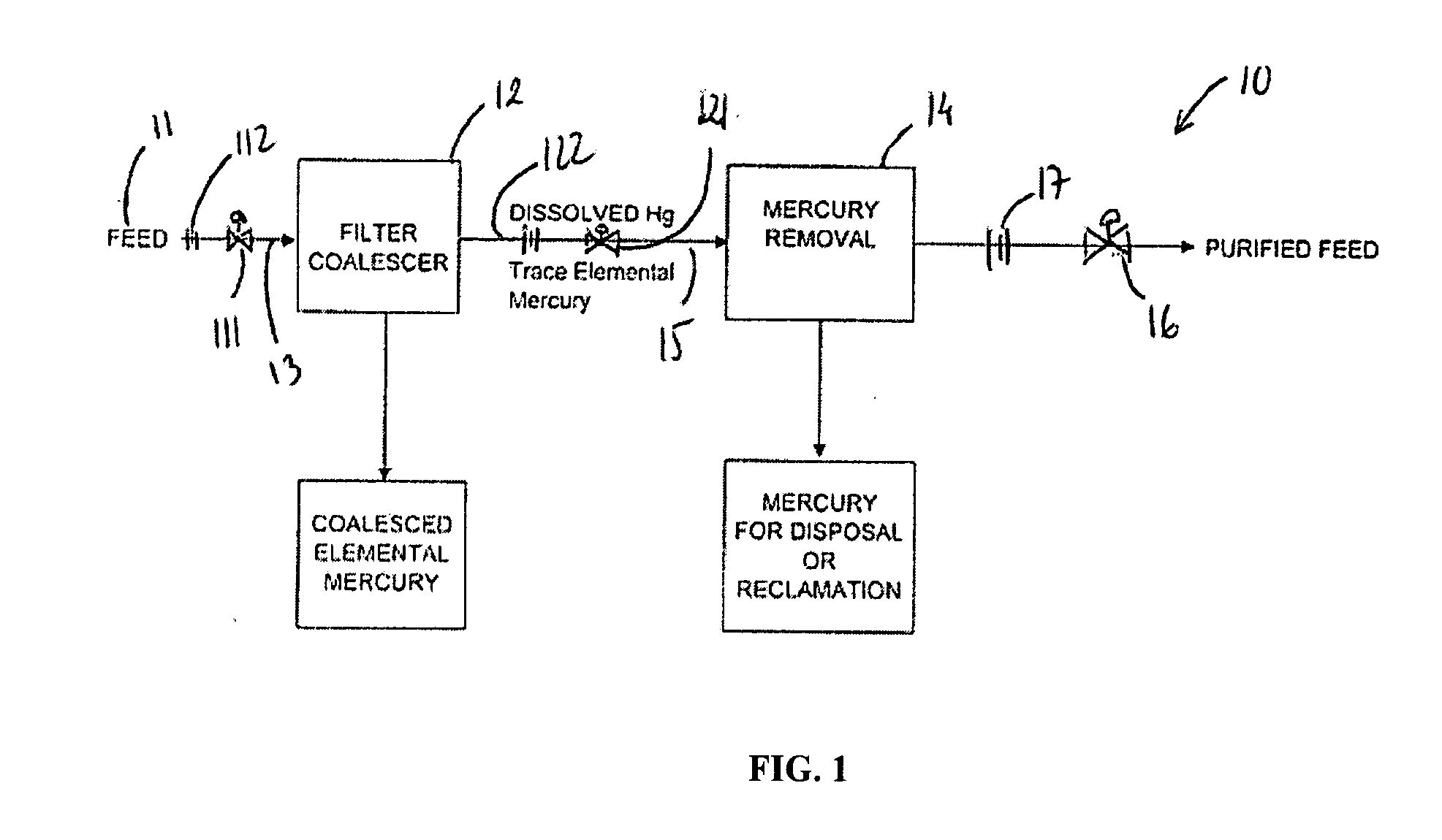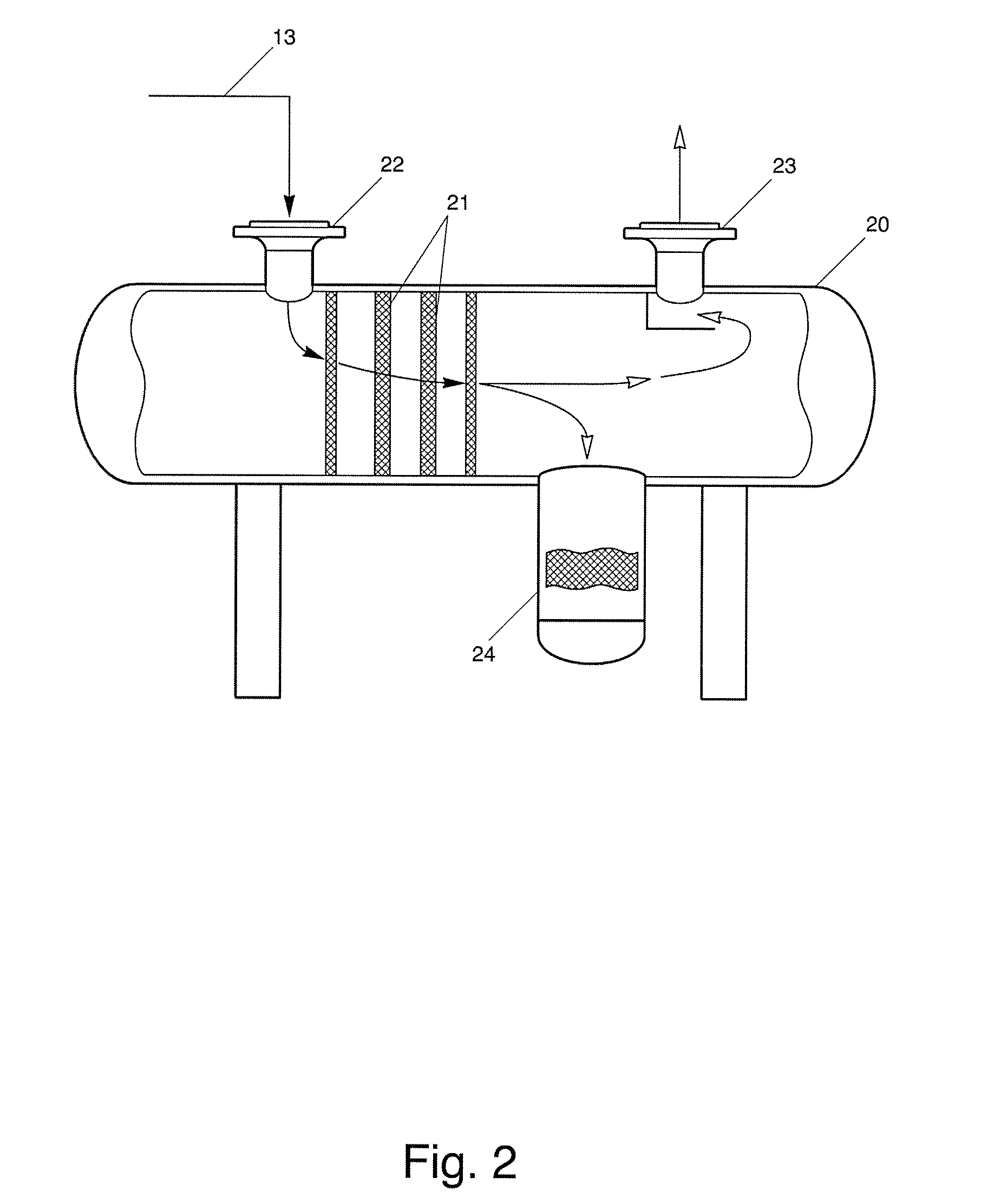Systems and methods for removal of heavy metal contaminants from fluids
a technology of heavy metal contaminants and fluids, applied in the direction of separation processes, radioactive contaminants, filtration separation, etc., can solve the problems of inability to meet the requirements of water treatment, lack of stability of metal-laden products, and difficulty in removing heavy metals, so as to reduce the the overall concentration of the targeted heavy metal contaminant
- Summary
- Abstract
- Description
- Claims
- Application Information
AI Technical Summary
Benefits of technology
Problems solved by technology
Method used
Image
Examples
Embodiment Construction
[0029]With reference to FIG. 1, the present invention provides, in one embodiment, a system 10 for treating contaminated fluid by removing contaminants that exist within the fluid. Fluids which may be treated in connection with the present invention may be viscous in nature, such as oil, or non-viscous in nature, such as a liquid or a gas. Contaminants that may be removed by system 10 of the present invention include heavy metals, such as mercury, arsenic, cadmium, and lead from complex waste fluids, such as produced water, and mercury from a variety of waste solutions and contaminated waste oils. Other contaminants that may be removed by system 10 of the present invention includes silver, uranium, plutonium, neptunium, americium, or a combination thereof.
[0030]The system 10, as illustrated in FIG. 1, includes, in an embodiment, a source 11 from which a flow of contaminated fluid may be introduced into the system. The contaminated fluid may contain various species or forms of heavy ...
PUM
| Property | Measurement | Unit |
|---|---|---|
| Flow rate | aaaaa | aaaaa |
| Concentration | aaaaa | aaaaa |
| Viscosity | aaaaa | aaaaa |
Abstract
Description
Claims
Application Information
 Login to View More
Login to View More - R&D
- Intellectual Property
- Life Sciences
- Materials
- Tech Scout
- Unparalleled Data Quality
- Higher Quality Content
- 60% Fewer Hallucinations
Browse by: Latest US Patents, China's latest patents, Technical Efficacy Thesaurus, Application Domain, Technology Topic, Popular Technical Reports.
© 2025 PatSnap. All rights reserved.Legal|Privacy policy|Modern Slavery Act Transparency Statement|Sitemap|About US| Contact US: help@patsnap.com



